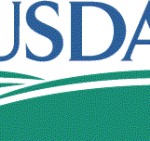U.S. Department of Agriculture Secretary (USDA) Tom Vilsack says U.S. agriculture currently faces four major man-made challenges: the sequester, the lack of a farm bill, immigration problems and trade barriers. Vilsack spoke about those challenges in his keynote address to Ag Outlook Conference on February 21.
 The sequester triggers cuts to every line item of USDA’s budget and it will impact people who work on USDA’s food safety efforts, Vilsack said. “Every line item, virtually every line item, of our budget will have to be reduced by a certain percentage, and that percentage could be somewhere in the neighborhood of 5 to 6 percent. And that’s an annual percentage, which means we have to implement this reduction in the remaining portion of the fiscal year, which will be approximately 6 months. That means it is really the impact of the effect of a 10-to-12-percent reduction of our remaining resources, and unlike normal circumstances where the Congress will direct you to reduce funding but give you the flexibility to choose where and how, this is a direct prescription from Congress to reduce every line item by the same percentage. Now, if you’re fortunate to be in an agency or part of the Department that has lots of lines, you have some degree of flexibility, but if you happen to be in an agency like Food Safety where you have very few lines and where most of the lines involve people and labor, you have very little recourse.”
The sequester triggers cuts to every line item of USDA’s budget and it will impact people who work on USDA’s food safety efforts, Vilsack said. “Every line item, virtually every line item, of our budget will have to be reduced by a certain percentage, and that percentage could be somewhere in the neighborhood of 5 to 6 percent. And that’s an annual percentage, which means we have to implement this reduction in the remaining portion of the fiscal year, which will be approximately 6 months. That means it is really the impact of the effect of a 10-to-12-percent reduction of our remaining resources, and unlike normal circumstances where the Congress will direct you to reduce funding but give you the flexibility to choose where and how, this is a direct prescription from Congress to reduce every line item by the same percentage. Now, if you’re fortunate to be in an agency or part of the Department that has lots of lines, you have some degree of flexibility, but if you happen to be in an agency like Food Safety where you have very few lines and where most of the lines involve people and labor, you have very little recourse.”
The next man-made challenge for U.S. agriculture is the lack of a five-year Farm Bill. Because Congress did not pass a bill last year, farmers who struggled through a season of extreme drought face financial ruin, Vilsack said. “They need a safety net. If we are to build this rural economy and create economic opportunity for these young people that are excited about living and working and raising their families in a small community, then we have to complement production agriculture and its safety net with a strong commitment to the bioenergy and bioeconomy, the future where virtually every aspect of what we grow and raise can be used to produce virtually everything we need in our economy. It’s how you actually strengthen and build a middle class in Rural America.”
The next challenge is a labor issue. U.S. agriculture relies “to a great extent on immigrant labor, and everybody in this room understands and appreciates that a good deal of that labor isn’t necessarily in this country legally. And that has been the case for a long time,” Vilsack said. “This is a risk to agriculture, and we are beginning to see the implications of that risk because we’ve had crops that were grown last year that could not be harvested, because there simply weren’t enough hands to pick them.” Immigration reform that acknowledges the importance of immigrant labor and creates an opportunity for them to be here legitimately while securing our borders is necessary for the industry to function at its best, he said.
Finally, there are trade barriers. “Right now, we’re dealing with a decision made by Russia to impose a ban as a result of the use here of ractopamine that is not scientifically based and is contrary to international law. The Trade Representative’s office and our office have stated very clearly it’s our expectation that Russia will reverse that decision. That’s another risk to the livestock industry that’s manmade.”
There has been progress in Japan, Korea, Mexico and Hong Kong, but barriers still exist, Vilsack said, “which is why it’s necessary and important for USDA to have the resources and the ability and the personnel to continue to advocate for American farmers and ranchers all over the world. As these barriers are constructed, we have to tear them down.”




